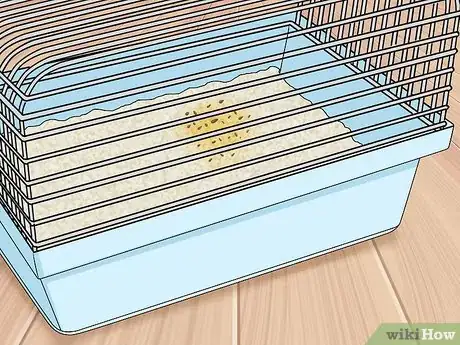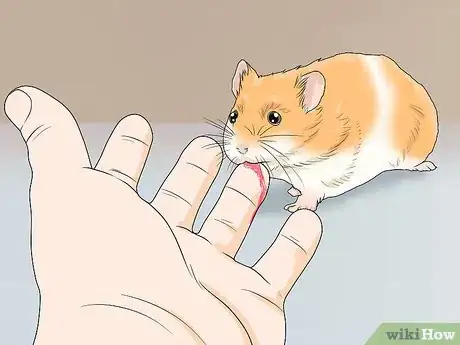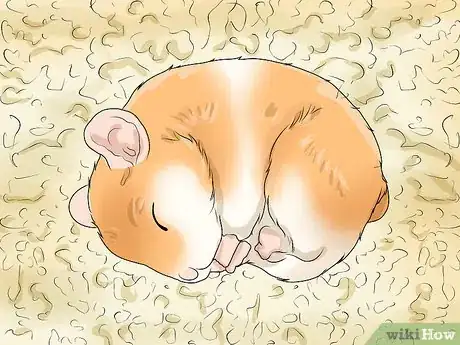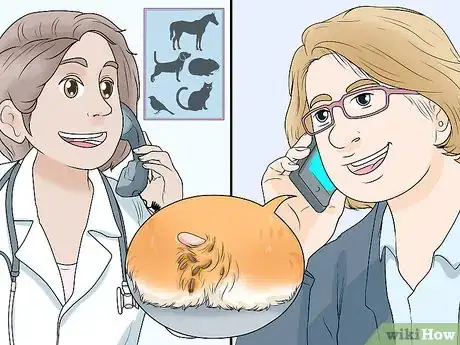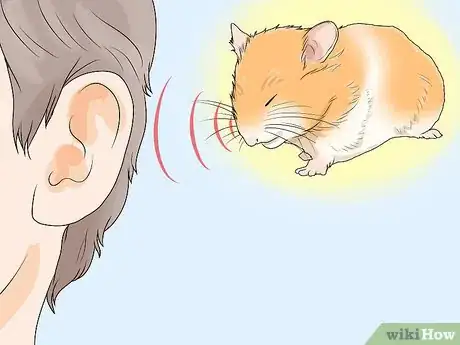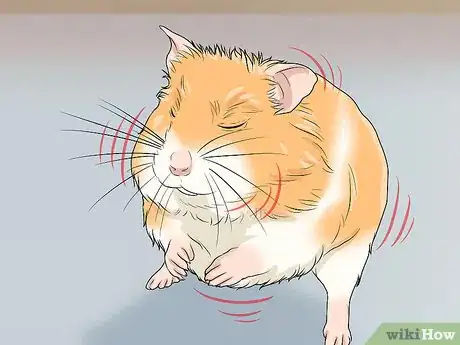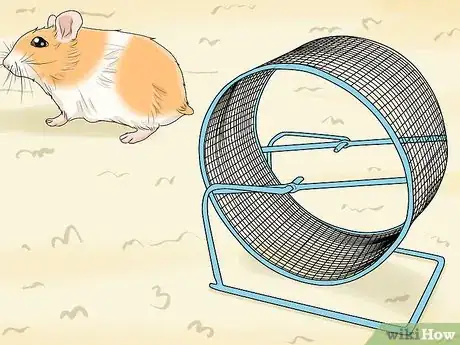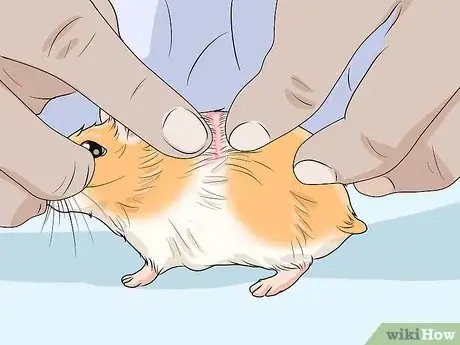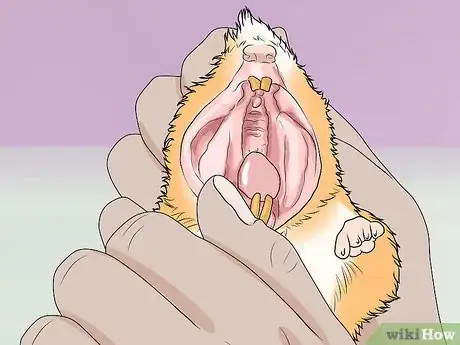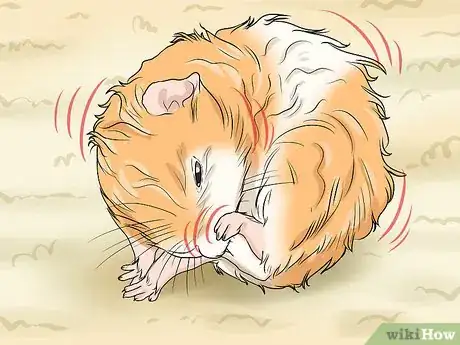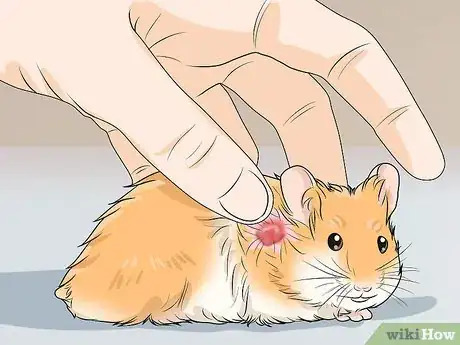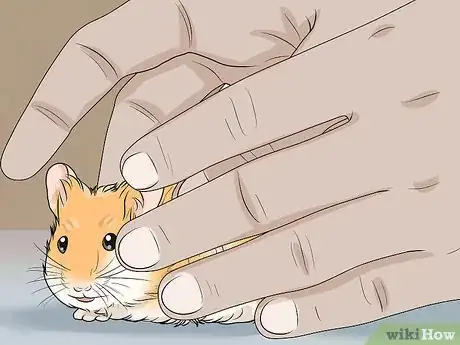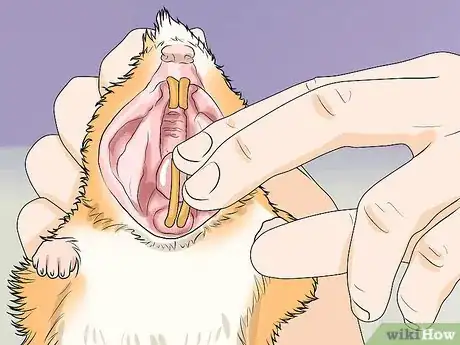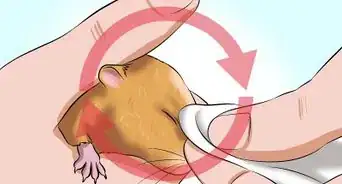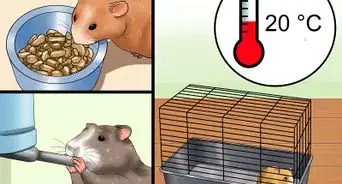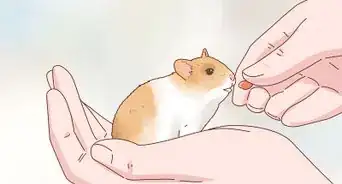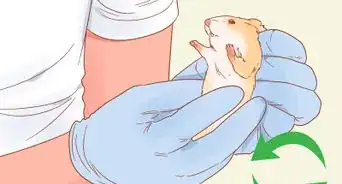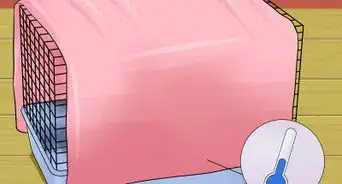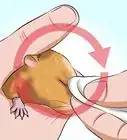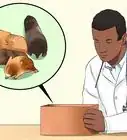This article was co-authored by Star of Texas Veterinary Hospital. Star of Texas Veterinary Hospital is a team of four veterinarians based in Austin, Texas. Star of Texas Veterinary Hospital offers medical assessments, dentistry, ultrasonography, flea control, radiology, and cardiology services to dogs, cats, and pocket pets. Star of Texas Veterinary Hospital is Austin’s first Fear Free Certified Practice and was awarded "1st Runner Up in Culture" by the 2020 Best of the Best Austin Official Choice Awards. They were a Best of the Best winner in Austin's Official Community Choice Awards. Star of Texas Veterinary Hospital's veterinarians are members of the American Association of Feline Practitioners, the Texas Veterinary Medical Association, and the American Veterinary Medical Association.
This article has been viewed 41,953 times.
Illness in hamsters can be hard to spot because they’re so small and because they often hide health problems until they’ve become severe. But it is possible to notice signs of stomach diseases, respiratory issues, and skin problems before it's too late. If you see any of the symptoms of these illnesses, don't hesitate to call your veterinarian for advice on how to treat your hamster.
Steps
Recognizing Wet Tail
-
1
-
2Search for diarrhea in the cage. A sick hamster’s wet bottom is the result of diarrhea, so apart from spotting it on your hamster’s body, look for diarrhea elsewhere in the cage. Using a gloved finger, sift through its usual bathroom area as well as the rest of the bedding throughout the cage.[2]
- Diarrhea by itself is not indicative of wet tail. It usually means your hamster has eaten too many fruits and vegetables.
- Small animals with diarrhea can get dehydrated really quickly, so it's important to take them to the vet right away.[3]
Advertisement -
3Watch for a decreased appetite. Observe your hamster’s food bowl and see if it’s staying fuller than normal. Because hamsters tend to hoard food, check the bedding throughout the cage for lots of rotten food that it hid but didn't eat.[4]
-
4Note any aggressive behavior. Sick hamsters feel more vulnerable, so they may lash out at their owners or at other hamsters.[5] If your hamster isn't normally aggressive and it bites you, then this could be a sign that it's ill. Do not continue to handle it if you notice increased signs of aggression.[6]
-
5Watch for increased sleep. Hamsters usually sleep a lot during the day, so you may need to stay up late to observe its nighttime routine. If it seems like it's waking infrequently both during the day and at night, and its energy level is lower than normal while awake, your hamster may be ill.[7]
-
6Call your veterinarian as soon as possible. Wet tail is one of the most serious and fast-acting diseases your hamster can contract. Don't hesitate to call your vet, even if you're unsure. Calling within 24 hours of spotting these symptoms will give your hamster the best shot at recovery.[8]
Spotting Respiratory Infection
-
1Look for discharge from its nose or eyes. Your hamster shouldn’t normally have nasal discharge, so take note of a runny nose and goopy or wet eyes. Occasional sneezing is normal, but if you’re seeing these symptoms accompanied by lots of sneezing, then your hamster is probably sick.[9]
- Your hamster may just have a simple cold, but this can potentially turn into pneumonia, so take these signs seriously and observe your hamster for any worsening symptoms over the next 24 to 48 hours.
-
2Listen for labored breathing. If your hamster is having trouble breathing or it sounds like it's wheezing, it may have a respiratory infection.[10] Labored breathing may be typical after exercise though, so pay special attention to any wheezing while your hamster is resting.
-
3Watch for any shivering. If your hamster is shivering and also has a runny nose, it likely has an infection in its lungs. Call your veterinarian to ask what they recommend, and if possible, try to warm your home or the room it's in by turning up the thermostat or using a space heater.
- Never place anything hot (such as a space heater) right next to the cage. Temperatures above 75 °F (24 °C) can be unhealthy for your hamster.
-
4Note any abnormal lethargy. Observe your hamster during times when it's normally active, which should be around the time you feed it during the day, or for several hours at night. If it's not running in its wheel at night, this could be a sign that it's not feeling well.
Looking for Skin Problems
-
1Look for flaky or red skin. When you handle your hamster each day, briefly run your fingertips through its coat to view the skin underneath. Flaky, dry, or red skin could be the result of an allergy to new bedding, but it could also mean your hamster has mites or ringworm.[11]
- Remove anything new you’ve added to the cage recently, and clean and disinfect everything else. If your hamster’s skin issues continue, you can probably rule out an allergy.
- Avoid using wood chips as your hamster’s bedding, since these are likely to cause allergic reactions. Stick to paper bedding and shavings instead.[12]
-
2Check inside swollen cheeks for food. Hamsters often shove food into their cheeks until they balloon out from their face. If your hamster’s cheeks look like this all the time, try to get a look inside its mouth to see if there’s any food inside. If not, your hamster probably has an abscess in their cheek, and it will need to be drained by your veterinarian.[13]
- Abscesses are caused by something cutting the inside of your hamster’s cheek, so be sure not to offer any snacks or treats that have jagged or sharp edges.
-
3Look for a matted coat and excessive scratching. If your hamster’s normally soft fur is suddenly matted or missing in spots, that could be a sign of a skin problem. See if it’s accompanied by lots of scratching, which could mean your hamster has mites.
- Hair loss by itself could simply be the result of abrasive bedding, rubbing against the wheel, or a leaky water bottle. It's also a sign of kidney problems in older hamsters.
-
4Watch for any blood on its body or in its cage. It may be tough to see issues on your hamster’s skin, but if there’s something serious, like an open sore, you’ll likely see blood somewhere on its coat. You may also see it somewhere else in the cage, like in the bedding where it sleeps.[14]
- When you clean your hamster’s cage each week, look for any abnormalities or changes in the bedding you’re discarding.
-
5Check for lumps on your hamster's body. Lumps can be a sign of abscesses, cysts, or tumors.[15] To check for lumps, gently feel around your hamster's body with your hands. If you notice a lump, take your hamster to the vet as soon as possible.
-
6Examine your hamster's incisor teeth. If your hamster's incisor teeth look overgrown, it could be a sign that it's not eating properly. Overgrown incisor teeth can lead to complications, like difficulty eating. If your hamster's teeth look overgrown, take it to the vet to have it examined.
Expert Q&A
-
QuestionWhen should I take my hamster to the vet?
 Star of Texas Veterinary HospitalStar of Texas Veterinary Hospital is a team of four veterinarians based in Austin, Texas. Star of Texas Veterinary Hospital offers medical assessments, dentistry, ultrasonography, flea control, radiology, and cardiology services to dogs, cats, and pocket pets. Star of Texas Veterinary Hospital is Austin’s first Fear Free Certified Practice and was awarded "1st Runner Up in Culture" by the 2020 Best of the Best Austin Official Choice Awards. They were a Best of the Best winner in Austin's Official Community Choice Awards. Star of Texas Veterinary Hospital's veterinarians are members of the American Association of Feline Practitioners, the Texas Veterinary Medical Association, and the American Veterinary Medical Association.
Star of Texas Veterinary HospitalStar of Texas Veterinary Hospital is a team of four veterinarians based in Austin, Texas. Star of Texas Veterinary Hospital offers medical assessments, dentistry, ultrasonography, flea control, radiology, and cardiology services to dogs, cats, and pocket pets. Star of Texas Veterinary Hospital is Austin’s first Fear Free Certified Practice and was awarded "1st Runner Up in Culture" by the 2020 Best of the Best Austin Official Choice Awards. They were a Best of the Best winner in Austin's Official Community Choice Awards. Star of Texas Veterinary Hospital's veterinarians are members of the American Association of Feline Practitioners, the Texas Veterinary Medical Association, and the American Veterinary Medical Association.
Veterinarians If your hamster has diarrhea, it could quickly become dehydrated and should see a vet.
If your hamster has diarrhea, it could quickly become dehydrated and should see a vet.
References
- ↑ https://www.caringpets.org/how-to-take-care-of-a-hamster/illnesses/signs-symptoms/
- ↑ https://thehamsterhouse.com/hamster-illnesses/wet-tail/
- ↑ Star of Texas Veterinary Hospital. Veterinarians.
- ↑ https://thehamsterhouse.com/hamster-illnesses/wet-tail/
- ↑ Star of Texas Veterinary Hospital. Veterinarians.
- ↑ https://thehamsterhouse.com/hamster-illnesses/wet-tail/
- ↑ https://thehamsterhouse.com/hamster-illnesses/wet-tail/
- ↑ https://thehamsterhouse.com/hamster-illnesses/wet-tail/
- ↑ https://pethelpful.com/rodents/Hamster-Health
- ↑ Star of Texas Veterinary Hospital. Veterinarians.
- ↑ https://pethelpful.com/rodents/Hamster-Health
- ↑ https://www.pets4homes.co.uk/pet-advice/some-common-hamster-health-problems.html
- ↑ https://pethelpful.com/rodents/Hamster-Health
- ↑ https://www.caringpets.org/how-to-take-care-of-a-hamster/illnesses/signs-symptoms/
- ↑ Star of Texas Veterinary Hospital. Veterinarians.

